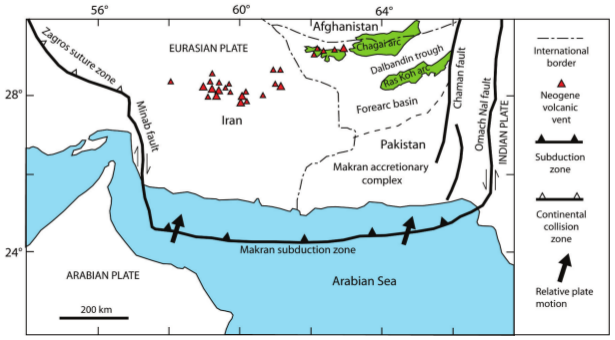Makran Trench on:
[Wikipedia]
[Google]
[Amazon]
 The Makran Trench is the physiographic expression of a subduction zone along the northeastern margin of the Gulf of Oman adjacent to the southwestern coast of Balochistan of
The Makran Trench is the physiographic expression of a subduction zone along the northeastern margin of the Gulf of Oman adjacent to the southwestern coast of Balochistan of
 The Makran Trench is the physiographic expression of a subduction zone along the northeastern margin of the Gulf of Oman adjacent to the southwestern coast of Balochistan of
The Makran Trench is the physiographic expression of a subduction zone along the northeastern margin of the Gulf of Oman adjacent to the southwestern coast of Balochistan of Pakistan
Pakistan, officially the Islamic Republic of Pakistan, is a country in South Asia. It is the List of countries and dependencies by population, fifth-most populous country, with a population of over 241.5 million, having the Islam by country# ...
and the southeastern coast of Iran
Iran, officially the Islamic Republic of Iran (IRI) and also known as Persia, is a country in West Asia. It borders Iraq to the west, Turkey, Azerbaijan, and Armenia to the northwest, the Caspian Sea to the north, Turkmenistan to the nort ...
. In this region the oceanic crust
Oceanic crust is the uppermost layer of the oceanic portion of the tectonic plates. It is composed of the upper oceanic crust, with pillow lavas and a dike complex, and the lower oceanic crust, composed of troctolite, gabbro and ultramaf ...
of the Arabian plate is being subducted beneath the continental crust
Continental crust is the layer of igneous, metamorphic, and sedimentary rocks that forms the geological continents and the areas of shallow seabed close to their shores, known as '' continental shelves''. This layer is sometimes called '' si ...
of the Eurasian plate.
Tectonics
In the Makran region, the Arabian plate subducts beneath the Eurasian plate at ~2-4cm/yr. This subduction is associated with an accretionary wedge of sediments which has developed since the Cenozoic. To the west, the Makran Trench is connected by the Minab Fault system to the Zagros fold and thrust belt. To the east, the Makran Trench is bounded by the transpressional strike-slip Ornach-Nal and Chaman Faults, which connect to theHimalaya
The Himalayas, or Himalaya ( ), is a mountain range in Asia, separating the plains of the Indian subcontinent from the Tibetan Plateau. The range has some of the Earth's highest peaks, including the highest, Mount Everest. More than 100 pea ...
n orogeny
Orogeny () is a mountain-mountain formation, building process that takes place at a convergent boundary, convergent plate margin when plate motion compresses the margin. An or develops as the compressed plate crumples and is tectonic uplift, u ...
. The Makran Subduction Zone is often split into two segments: the east and west. The Sonne fault divides the two. Though largely much quieter than many other subduction zones, studies reveal that the Makran Trench may be capable of very large earthquakes, even extending into the magnitude 9 range.
Fluids, gas and mud volcanoes
The Makran accretionary complex is characterized by a number of features associated with escaping water andmethane
Methane ( , ) is a chemical compound with the chemical formula (one carbon atom bonded to four hydrogen atoms). It is a group-14 hydride, the simplest alkane, and the main constituent of natural gas. The abundance of methane on Earth makes ...
. Mud volcano
A mud volcano or mud dome is a landform created by the eruption of mud or Slurry, slurries, water and gases. Several geological processes may cause the formation of mud volcanoes. Mud volcanoes are not true Igneous rock, igneous volcanoes as th ...
es are found onshore in both Iran and Pakistan, and cold seeps exist offshore. The formation of an island ( Zalzala Jazeera) after the 2013 Balochistan earthquakes is thought to be the result of a mud volcano. An island (Malan island) formed as a mud volcano subsided under water due to gas release and mud extrusion. Heavy rain from monsoon season built pressure to the aquifer, enhancing the release of gas.
Earthquakes
* 1945 Balochistan earthquake: A magnitude 8.1 event occurred on 28 November, causing atsunami
A tsunami ( ; from , ) is a series of waves in a water body caused by the displacement of a large volume of water, generally in an ocean or a large lake. Earthquakes, volcanic eruptions and underwater explosions (including detonations, ...
on the Makran coast.
* 5 August 1947: Mw 6.8 event just off the coast of western Pakistan
* 7 December 1989: Mw 6.0 event near the coast of southern Iran
* 7 February 2017: Mw 6.3 event just off the coast of western Pakistan
See also
* Offshore Indus Basin *Pamir Mountains
The Pamir Mountains are a Mountain range, range of mountains between Central Asia and South Asia. They are located at a junction with other notable mountains, namely the Tian Shan, Karakoram, Kunlun Mountains, Kunlun, Hindu Kush and the Himalaya ...
* Panjshir Valley
References
Geology of Iran Geology of Pakistan Subduction zones {{tectonics-stub